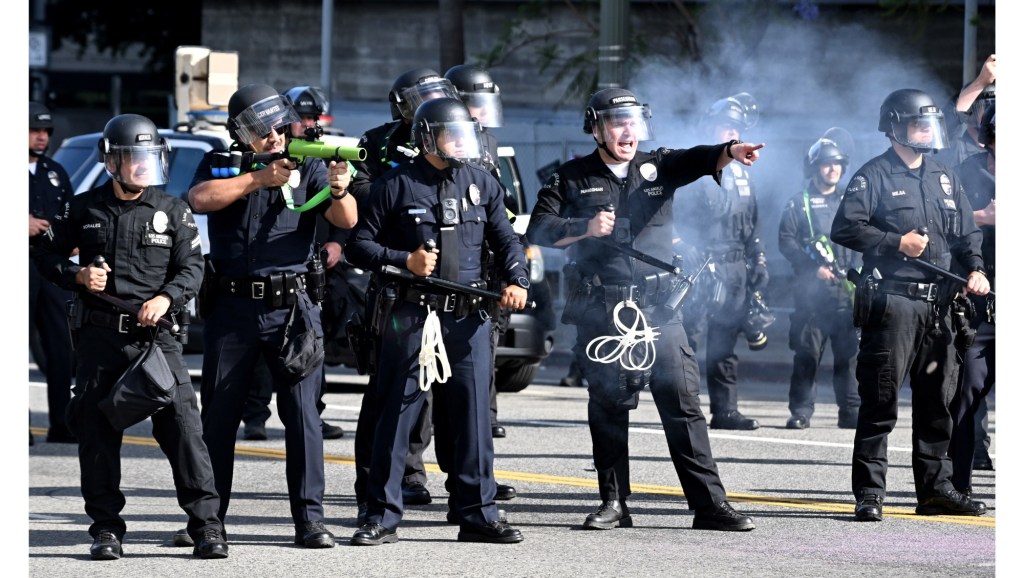
If not for our nation’s First Amendment, our country could quickly resemble a despotism where police forces attack reporters and quash news reports that diverge from the official view. A recent court battle over immigration protests in Los Angeles highlights the precariousness of our freedoms to speak and freely assembly—and proves that the above statement is not hyperbole.
In fact, we’re shocked it took a federal judge to rein in the Los Angeles Police Department’s unconscionable behavior, as police officers on multiple occasions reportedly fired rubber bullets, and used tear gas and physical force on reporters covering the protests. The lawsuit’s plaintiffs, including the Los Angeles Press Club and other journalists, cited 35 such instances in less than two weeks.
This abuse of reporters certainly limits their coverage of police behavior toward protesters. If it’s not officially sanctioned, then it’s tolerated. Why else would the department have fought this injunction? A responsible department would punish the perpetrators, be embarrassed to see civilian officers behave like members of paramilitaries in some third-world dictatorship, and would immediately order its halt. Apparently, LAPD is not a responsible department. Here’s hoping that victims find themselves experienced tort attorneys.
“Plaintiffs have shown a likelihood of success on their First Amendment claims and they are likely to suffer irreparable harm covering continuing protests in Los Angeles,” wrote federal Judge Hernán D. Vera, in granting a temporary restraining order against the department. “Indeed, given the fundamental nature of the speech interests involved and the almost daily protests throughout Southern California drawing media coverage, the identified harm is undoubtedly imminent and concrete.” Bravo.
The reported attacks are not even close calls. The ruling gave the example of a photojournalist who was fired upon multiple times with rubber bullets while documenting the protests from an overpass above the fracas. The photographer was wearing a vest emblazoned, “PRESS.” That identifier is not supposed to be a target. In one instance captured on video, an Australian TV reporter was being interviewed on camera dozens of feet from police. There were no protests nearby. Yet an officer “appears to aim” at her and hits her in the leg with a rubber bullet.
If this is how LAPD officers treat journalists—or anyone for that matter—while the cameras are rolling, we can only imagine how they treat them when no one is watching. In another instance referred to by the judge, “an LAPD mounted officer charged 82-year-old photographer David Healy with his horse, knocking Healy to the ground and breaking one of his ribs.” Journalists’ attorneys claim that many attacks were deliberate. The department could easily stop it, but now—as the judge noted—claims these incidents are “old news” and there’s no emergency justifying the order.
We’ve written regularly on these pages about the dangers of militarized policing, whereby officers view themselves more as an invading army than as civilian peacekeepers. The result is not just abuses against citizens and their constitutional rights, but the destruction of public trust in police officers and law enforcement in general. Protests come and go, but police must earn the trust of the communities they patrol if they want to fight crime and maintain order over the long term. LAPD just took a huge step backwards.



